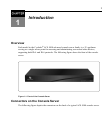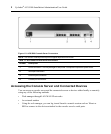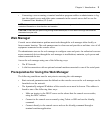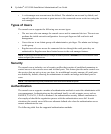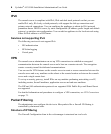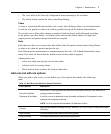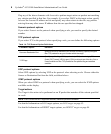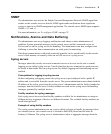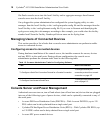
• Connecting a server running a terminal emulation program enables an administrator to log
into the console server and either enter commands in the console server shell or use the
Command Line Interface (CLI) tool.
NOTE: Onlyonerootor adminuser canhavean active CLI or web manager session. Asecond rootor adminuser
mustabort thesessionor closethe other user’ssession.
CAUTION: Ifthere arecronjobsrunningthrough automatedscripts,a rootor adminuser logincancausethe
automatedcronjobstofail.
Web Manager
Console server administrators perform most tasks through the web manager either locally or
from a remote location. The web manager runs in a browser and provides a real-time view of all
equipment connected to the console server.
The administrator can use the web manager to configure users and ports. An authorized user can
access connected devices through the web manager to troubleshoot, maintain, cycle power and
reboot connected devices.
Access the web manager using one of the following ways:
• The IP Network.
• A dial-in connection with an optional external modem connected to one of the serial ports.
Prerequisites for Using the Web Manager
The following conditions must be met prior to accessing the web manager.
• Basic network parameters must be defined on the console server so the web manager can be
launched over the network.
• The dynamically-assigned IP address of the console server must be known. This address is
found in one of the following three ways:
• Make an inquiry to the DHCP server on the subnet that the console server resides,
using the MAC address.
• Connect to the console server remotely using Telnet or SSH and use the ifconfig
command.
• Connect directly to the console server and use the ifconfig command through a
terminal emulator application.
Chapter 1: Introduction 3









